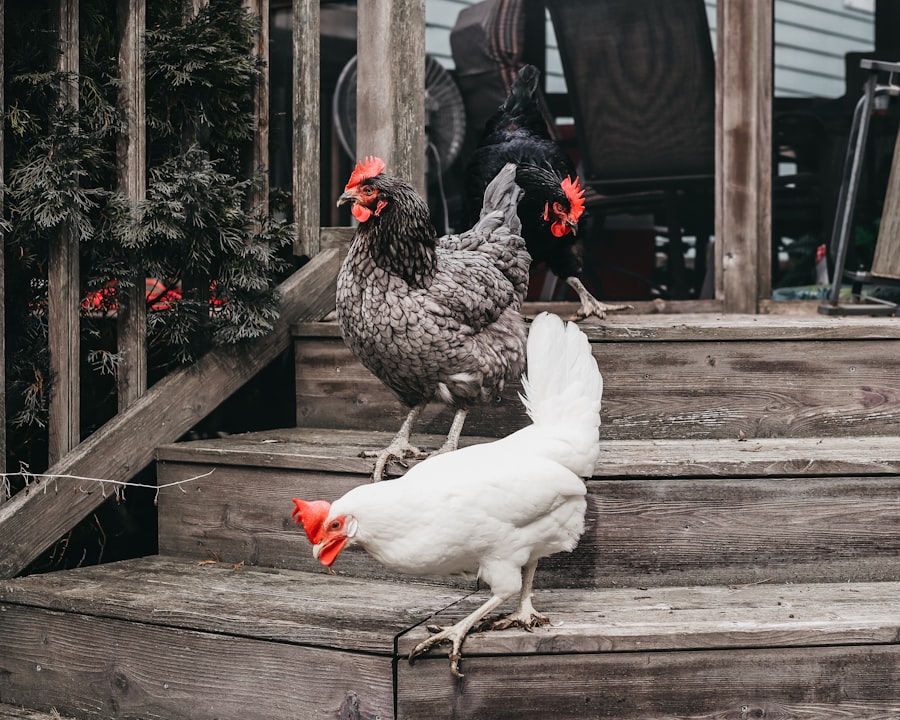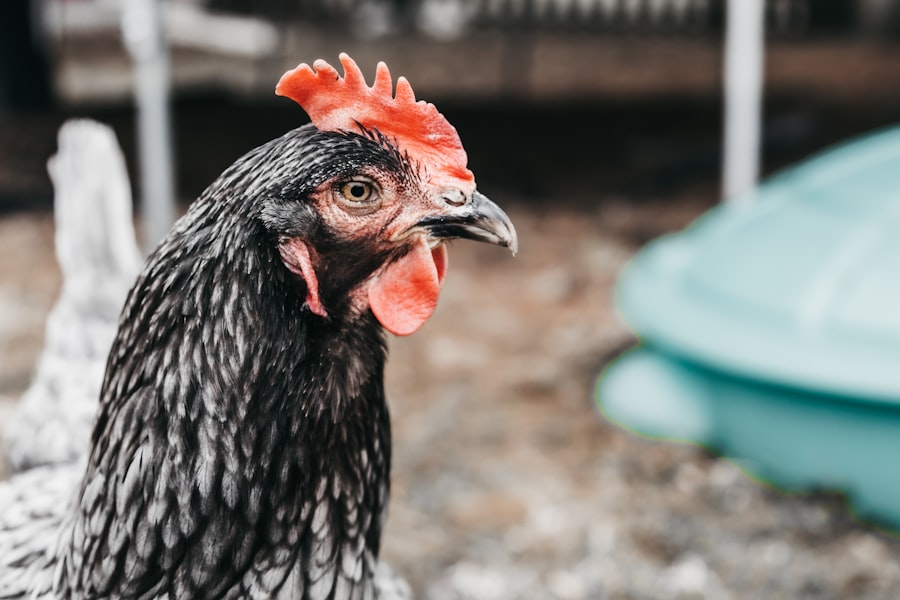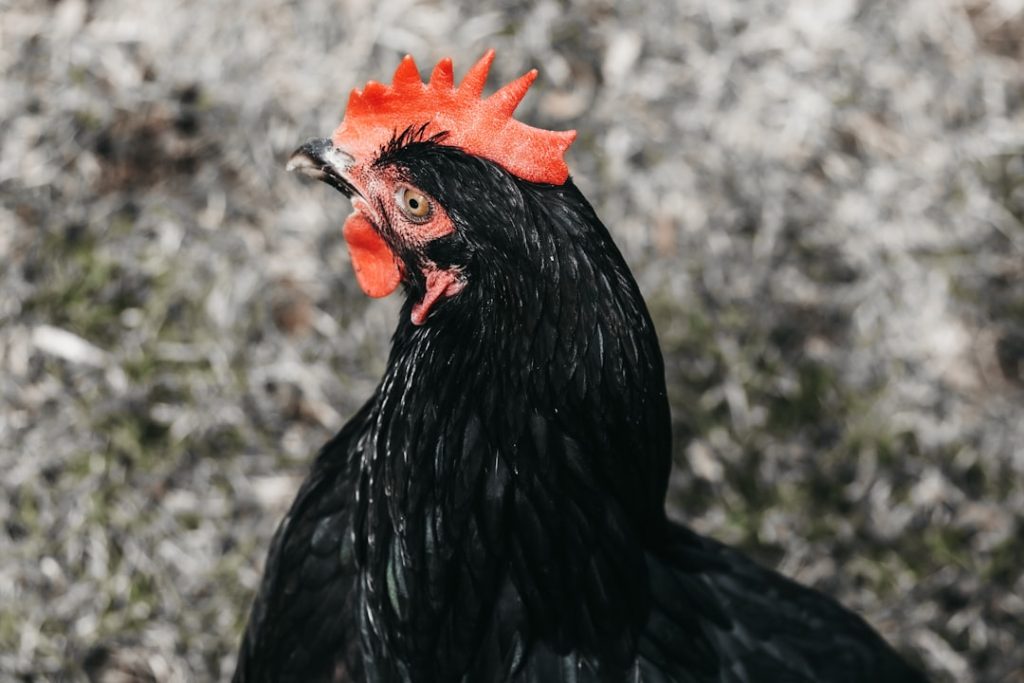Light is a critical factor in chicken physiology and behavior. It influences their circadian rhythms, hormone production, and overall health. In natural environments, chickens synchronize their activities with the sun’s daily cycle, using light cues for foraging, roosting, and egg-laying.
Replicating these natural light patterns in artificial environments is essential for maintaining chickens’ biological functions and well-being. Light exposure also affects chickens’ health and productivity. It stimulates Vitamin D synthesis, which is crucial for bone development and overall health.
Light regulates the reproductive cycle in chickens, impacting egg production and fertility. The duration and intensity of light exposure can significantly influence a chicken’s laying patterns and reproductive success. In poultry management, controlling light exposure is a key strategy for optimizing chicken health and productivity.
Proper lighting schedules can enhance growth rates, improve feed conversion efficiency, and regulate egg production. Conversely, inadequate or inappropriate lighting can lead to stress, reduced productivity, and health issues in chickens.
Table of Contents
- 1 How Light Affects Chicken Behavior and Health
- 2 Choosing the Right Type of Light for Your Chicken Coop
- 3 Setting Up a Light Schedule for Your Chickens
- 4 Tips for Keeping Your Chicken Coop Well-Lit
- 5 Common Mistakes to Avoid When Using Light in Your Chicken Coop
- 6 The Benefits of Keeping Light On for Chickens
- 7 FAQs
- 7.1 What is the purpose of keeping a light on for chickens?
- 7.2 How long should the light be kept on for chickens?
- 7.3 What type of light should be used for chickens?
- 7.4 Are there any potential drawbacks to keeping a light on for chickens?
- 7.5 Are there any specific guidelines for keeping a light on for chickens?
Key Takeaways
- Adequate light is crucial for the health and well-being of chickens
- Light affects chicken behavior, egg production, and overall health
- Choose the right type of light to mimic natural sunlight for your chicken coop
- Set up a consistent light schedule to regulate your chickens’ internal clocks
- Keep your chicken coop well-lit to prevent stress and encourage natural behaviors
How Light Affects Chicken Behavior and Health
Light and Activity Patterns
As diurnal creatures, chickens are naturally active during the day and rest at night. The presence of light signals to chickens that it’s time to engage in various activities such as foraging, dust bathing, and socializing with other flock members.
The Impact of Light on Physical Health
Light has a direct impact on the physical health of chickens. Exposure to light is essential for the production of Vitamin D, which plays a crucial role in calcium absorption and bone development. This is essential for maintaining strong and healthy bones in chickens.
Light and Reproductive Health
Furthermore, exposure to light also influences the hormonal balance in chickens, which in turn affects their reproductive health and egg-laying patterns. This highlights the significance of light as a fundamental element that directly influences the behavior and physical well-being of chickens.
Choosing the Right Type of Light for Your Chicken Coop

When it comes to choosing the right type of light for your chicken coop, there are several factors to consider. Firstly, it is important to select a light source that provides the full spectrum of natural light, as this will best mimic the sun’s natural rays and provide the most benefits to your chickens. Full-spectrum lights are designed to replicate natural sunlight and provide a balanced spectrum of visible light, which is essential for supporting the biological functions of chickens.
Another important consideration when choosing the right type of light for your chicken coop is energy efficiency and safety. LED lights are a popular choice for chicken coops as they are energy-efficient, long-lasting, and produce little heat, reducing the risk of fire hazards in the coop. Additionally, LED lights can be easily adjusted to provide different levels of brightness, allowing you to create the ideal lighting conditions for your chickens.
Furthermore, it is important to consider the durability and weather resistance of the light fixtures, especially if your chicken coop is located outdoors. Look for lights that are specifically designed for outdoor use and can withstand exposure to dust, moisture, and fluctuating temperatures. By choosing the right type of light for your chicken coop, you can ensure that your chickens receive the best possible lighting conditions for their health and well-being.
Setting Up a Light Schedule for Your Chickens
Setting up a light schedule for your chickens is essential for providing them with consistent lighting conditions that mimic natural daylight patterns. The first step in creating a light schedule is to determine the ideal amount of light your chickens need each day. In general, chickens require around 14-16 hours of light per day to maintain optimal health and productivity.
This can be achieved by combining natural daylight with artificial lighting in the chicken coop. To create a consistent light schedule for your chickens, it is important to establish regular sunrise and sunset times using artificial lighting. This can be achieved by using timers or automatic lighting systems that turn on and off at specific times each day.
By simulating natural daylight patterns, you can help regulate your chickens’ internal clocks and ensure that they receive the right amount of light each day. It is also important to gradually adjust the light schedule to mimic seasonal changes in daylight length. As the days grow shorter or longer throughout the year, you may need to adjust the timing and duration of artificial lighting in the chicken coop to ensure that your chickens receive consistent lighting conditions.
By setting up a light schedule that closely mirrors natural daylight patterns, you can help maintain the overall health and well-being of your chickens.
Tips for Keeping Your Chicken Coop Well-Lit
Keeping your chicken coop well-lit is essential for providing a comfortable and healthy environment for your chickens. One important tip for keeping your chicken coop well-lit is to ensure that the lighting fixtures are positioned strategically to provide even coverage throughout the coop. This can be achieved by installing multiple light fixtures or using reflective surfaces to distribute light more effectively.
Another tip for keeping your chicken coop well-lit is to regularly clean the lighting fixtures and remove any dust or debris that may accumulate on them. Dirty or obstructed light fixtures can reduce the amount of light reaching your chickens and create uneven lighting conditions in the coop. By keeping the lighting fixtures clean and well-maintained, you can ensure that your chickens receive consistent and adequate lighting.
Additionally, it is important to monitor the brightness of the lighting in your chicken coop and make adjustments as needed. If you notice any areas of the coop that are consistently dim or shadowy, consider adding additional lighting fixtures or repositioning existing ones to improve coverage. By regularly assessing the lighting conditions in your chicken coop, you can ensure that your chickens receive optimal lighting for their health and well-being.
Common Mistakes to Avoid When Using Light in Your Chicken Coop

Harsh Lighting: A Recipe for Stress
Using harsh or overly bright lighting in the chicken coop can cause stress and discomfort for your chickens. Instead, opt for soft, natural-looking lighting that mimics daylight to create a comfortable environment.
The Importance of Darkness
Failing to provide enough darkness for your chickens to rest and sleep is another common mistake. Chickens need periods of darkness at night to rest and recharge, just as they need adequate light during the day. Establish a consistent light schedule that includes periods of darkness to ensure your chickens get ample rest.
Avoiding Sudden Changes and Neglect
Avoid sudden changes in lighting conditions, as this can disrupt your chickens’ natural rhythms and cause stress. When making adjustments to the light schedule or introducing new lighting fixtures, do so gradually to allow your chickens to acclimate to the changes. Additionally, regularly inspect and maintain lighting fixtures to prevent dirty or malfunctioning lights from creating uneven lighting conditions and compromising your flock’s health.
The Benefits of Keeping Light On for Chickens
In conclusion, providing adequate lighting for your chicken coop is essential for supporting the behavior, health, and overall well-being of your flock. Light plays a crucial role in regulating the biological functions of chickens, influencing their behavior, reproductive health, and overall productivity. By choosing the right type of light, setting up a consistent light schedule, and keeping your chicken coop well-lit, you can ensure that your chickens receive optimal lighting conditions that mimic natural daylight patterns.
Furthermore, by avoiding common mistakes such as using harsh lighting or neglecting maintenance, you can create a comfortable and healthy environment for your flock. Ultimately, by prioritizing adequate lighting in your chicken coop, you can support the physical and psychological well-being of your chickens and help them thrive in their environment.
If you’re looking for more information on how to keep your chickens safe and comfortable, you might want to check out this article on A-Frame Chicken Coops. It provides valuable insights on how to build a secure and spacious coop for your feathered friends.
FAQs
What is the purpose of keeping a light on for chickens?
Keeping a light on for chickens is often done to extend the daylight hours during the winter months. This helps to stimulate egg production and maintain the overall health and well-being of the chickens.
How long should the light be kept on for chickens?
The light should be kept on for chickens for an additional 14-16 hours per day during the winter months. This extended light period helps to mimic the longer days of summer and encourages the chickens to continue laying eggs.
What type of light should be used for chickens?
A standard incandescent or LED light bulb can be used to provide additional light for chickens. It is important to use a low-wattage bulb to avoid overheating the coop and to ensure the chickens have a consistent light source.
Are there any potential drawbacks to keeping a light on for chickens?
While providing additional light can stimulate egg production, it is important to monitor the chickens for signs of stress or fatigue. Overexposure to light can disrupt the chickens’ natural sleep patterns and may lead to health issues if not managed properly.
Are there any specific guidelines for keeping a light on for chickens?
It is important to gradually increase the amount of light provided to the chickens, rather than suddenly exposing them to a longer light period. Additionally, it is recommended to provide a period of darkness for the chickens to rest and maintain their natural circadian rhythms.
Meet Walter, the feathered-friend fanatic of Florida! Nestled in the sunshine state, Walter struts through life with his feathered companions, clucking his way to happiness. With a coop that’s fancier than a five-star hotel, he’s the Don Juan of the chicken world. When he’s not teaching his hens to do the cha-cha, you’ll find him in a heated debate with his prized rooster, Sir Clucks-a-Lot. Walter’s poultry passion is no yolk; he’s the sunny-side-up guy you never knew you needed in your flock of friends!







